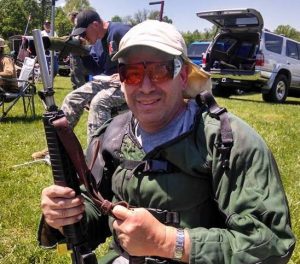By Mike Glasman.
Annealing Machines – Burning the Checkbook…
 Part of the journey towards being “Best in Class” as a club is providing technical information so you can make informed decisions on what you need to do to succeed. Last month we covered temperature measurement. In this last installment, we will cover annealing machines.
Part of the journey towards being “Best in Class” as a club is providing technical information so you can make informed decisions on what you need to do to succeed. Last month we covered temperature measurement. In this last installment, we will cover annealing machines.
Now that you know how to measure temperature, how do you apply heat to the brass and what attributes does a good annealing machine need to have?
It should be:
- We are dealing with open flame or high voltages and high temperatures
- The machine should accurately, reliably and readily control annealing temperature and time
- For convenience, a brass feeder would be preferable, but not essential
The most popular and accessible heat source is the propane torch when used in conjunction with a machine that introduces the brass to the source of heat precisely and in a repeatable manner. Most machines use a turntable, or segmented wheel and a speed-controlled motor. The only problems with propane are dealing with an open flame, and as the torch heads heat, they seem to provide a hotter flame. This may be due to thermal expansion within the torch heads which allows more gas through the needle valve as time goes by.
Three gas-fired machines that are very popular are made by Ken Light, Benchsource, and Doug Giraud. The author has used all with good results. Others are on the market and appear to be well-made and reasonably priced. Also note that the Giraud machine has a hopper-style casefeeder that handles dozens of cases at-a-time. All units have provision for motor speed control.
The more advanced (and preferred) method is to use induction heating. (no open flame, and very precise, reliable, and repeatable) The Giraud machine can be adapted to operate with a power unit made by Fluxeon ( http://fluxeon.com/ ). Another induction machine on the market is the Annealing Made Perfect unit (https://www.ampannealing.com/index/ ). I have not yet not had the opportunity to try the Annealing Made Perfect annealing machine, and hopes to make a trip down to Creedmoor Sports soon to check it out.
The author has the Giraud/Fluxeon unit and except some initial issues with the power unit, which were resolved, is satisfied with its performance; however, nothing is pre-set. The user has to figure out how much time the power unit is on using Tempilaq to attain 750 degrees F. – there are no published pre-set times/speed settings for .223, .308 30-’06, etc. The AMP machine, though, is already pre-set by the manufacturer, which may be very appealing to some potential buyers.
Finally – when should you anneal and how often? The author anneals his brass used for 600 yards every time its fired. Short line brass is every second firing.
And brass should be annealed BEFORE resizing. This is because there may be some springback or relaxation and dimensional changes when internal stresses are relaxed due to annealing. When you re- size, the brass is put back to its original size and consistent neck tension is established once more.
I hope you have enjoyed these articles – should you have any questions at all please don’t hesitate to contact me at orsatime@gmail.com
See ‘ya on the range! Mike Glasman